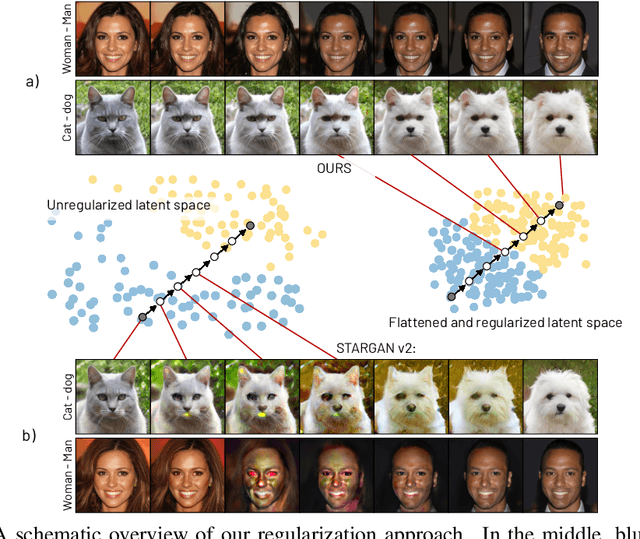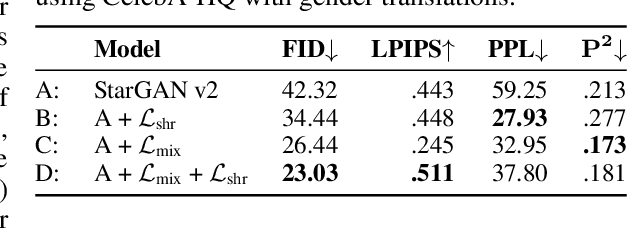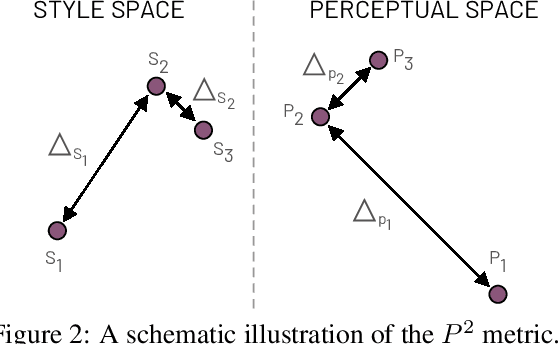Enver Sangineto
Guiding the Experts: Semantic Priors for Efficient and Focused MoE Routing
May 24, 2025Abstract:Mixture-of-Experts (MoE) models have emerged as a promising direction for scaling vision architectures efficiently. Among them, Soft MoE improves training stability by assigning each token to all experts via continuous dispatch weights. However, current designs overlook the semantic structure which is implicitly encoded in these weights, resulting in suboptimal expert routing. In this paper, we discover that dispatch weights in Soft MoE inherently exhibit segmentation-like patterns but are not explicitly aligned with semantic regions. Motivated by this observation, we propose a foreground-guided enhancement strategy. Specifically, we introduce a spatially aware auxiliary loss that encourages expert activation to align with semantic foreground regions. To further reinforce this supervision, we integrate a lightweight LayerScale mechanism that improves information flow and stabilizes optimization in skip connections. Our method necessitates only minor architectural adjustments and can be seamlessly integrated into prevailing Soft MoE frameworks. Comprehensive experiments on ImageNet-1K and multiple smaller-scale classification benchmarks not only showcase consistent performance enhancements but also reveal more interpretable expert routing mechanisms.
Diffusion Transformers for Tabular Data Time Series Generation
Apr 10, 2025



Abstract:Tabular data generation has recently attracted a growing interest due to its different application scenarios. However, generating time series of tabular data, where each element of the series depends on the others, remains a largely unexplored domain. This gap is probably due to the difficulty of jointly solving different problems, the main of which are the heterogeneity of tabular data (a problem common to non-time-dependent approaches) and the variable length of a time series. In this paper, we propose a Diffusion Transformers (DiTs) based approach for tabular data series generation. Inspired by the recent success of DiTs in image and video generation, we extend this framework to deal with heterogeneous data and variable-length sequences. Using extensive experiments on six datasets, we show that the proposed approach outperforms previous work by a large margin.
Causal Graphical Models for Vision-Language Compositional Understanding
Dec 12, 2024



Abstract:Recent work has empirically shown that Vision-Language Models (VLMs) struggle to fully understand the compositional properties of the human language, usually modeling an image caption as a "bag of words". As a result, they perform poorly on compositional tasks, which require a deeper understanding of the different entities of a sentence (subject, verb, etc.) jointly with their mutual relationships in order to be solved. In this paper, we model the dependency relations among textual and visual tokens using a Causal Graphical Model (CGM), built using a dependency parser, and we train a decoder conditioned by the VLM visual encoder. Differently from standard autoregressive or parallel predictions, our decoder's generative process is partially-ordered following the CGM structure. This structure encourages the decoder to learn only the main causal dependencies in a sentence discarding spurious correlations. Using extensive experiments on five compositional benchmarks, we show that our method significantly outperforms all the state-of-the-art compositional approaches by a large margin, and it also improves over methods trained using much larger datasets.
Semantic Residual Prompts for Continual Learning
Mar 14, 2024Abstract:Prompt-tuning methods for Continual Learning (CL) freeze a large pre-trained model and focus training on a few parameter vectors termed prompts. Most of these methods organize these vectors in a pool of key-value pairs, and use the input image as query to retrieve the prompts (values). However, as keys are learned while tasks progress, the prompting selection strategy is itself subject to catastrophic forgetting, an issue often overlooked by existing approaches. For instance, prompts introduced to accommodate new tasks might end up interfering with previously learned prompts. To make the selection strategy more stable, we ask a foundational model (CLIP) to select our prompt within a two-level adaptation mechanism. Specifically, the first level leverages standard textual prompts for the CLIP textual encoder, leading to stable class prototypes. The second level, instead, uses these prototypes along with the query image as keys to index a second pool. The retrieved prompts serve to adapt a pre-trained ViT, granting plasticity. In doing so, we also propose a novel residual mechanism to transfer CLIP semantics to the ViT layers. Through extensive analysis on established CL benchmarks, we show that our method significantly outperforms both state-of-the-art CL approaches and the zero-shot CLIP test. Notably, our findings hold true even for datasets with a substantial domain gap w.r.t. the pre-training knowledge of the backbone model, as showcased by experiments on satellite imagery and medical datasets.
Collaborative Neural Painting
Dec 04, 2023Abstract:The process of painting fosters creativity and rational planning. However, existing generative AI mostly focuses on producing visually pleasant artworks, without emphasizing the painting process. We introduce a novel task, Collaborative Neural Painting (CNP), to facilitate collaborative art painting generation between humans and machines. Given any number of user-input brushstrokes as the context or just the desired object class, CNP should produce a sequence of strokes supporting the completion of a coherent painting. Importantly, the process can be gradual and iterative, so allowing users' modifications at any phase until the completion. Moreover, we propose to solve this task using a painting representation based on a sequence of parametrized strokes, which makes it easy both editing and composition operations. These parametrized strokes are processed by a Transformer-based architecture with a novel attention mechanism to model the relationship between the input strokes and the strokes to complete. We also propose a new masking scheme to reflect the interactive nature of CNP and adopt diffusion models as the basic learning process for its effectiveness and diversity in the generative field. Finally, to develop and validate methods on the novel task, we introduce a new dataset of painted objects and an evaluation protocol to benchmark CNP both quantitatively and qualitatively. We demonstrate the effectiveness of our approach and the potential of the CNP task as a promising avenue for future research.
StylerDALLE: Language-Guided Style Transfer Using a Vector-Quantized Tokenizer of a Large-Scale Generative Model
Mar 16, 2023



Abstract:Despite the progress made in the style transfer task, most previous work focus on transferring only relatively simple features like color or texture, while missing more abstract concepts such as overall art expression or painter-specific traits. However, these abstract semantics can be captured by models like DALL-E or CLIP, which have been trained using huge datasets of images and textual documents. In this paper, we propose StylerDALLE, a style transfer method that exploits both of these models and uses natural language to describe abstract art styles. Specifically, we formulate the language-guided style transfer task as a non-autoregressive token sequence translation, i.e., from input content image to output stylized image, in the discrete latent space of a large-scale pretrained vector-quantized tokenizer. To incorporate style information, we propose a Reinforcement Learning strategy with CLIP-based language supervision that ensures stylization and content preservation simultaneously. Experimental results demonstrate the superiority of our method, which can effectively transfer art styles using language instructions at different granularities. Code is available at https://github.com/zipengxuc/StylerDALLE.
SpectralCLIP: Preventing Artifacts in Text-Guided Style Transfer from a Spectral Perspective
Mar 16, 2023Abstract:Contrastive Language-Image Pre-Training (CLIP) has refreshed the state of the art for a broad range of vision-language cross-modal tasks. Particularly, it has created an intriguing research line of text-guided image style transfer, dispensing with the need for style reference images as in traditional style transfer methods. However, directly using CLIP to guide the transfer of style leads to undesirable artifacts (mainly written words and unrelated visual entities) spread over the image, partly due to the entanglement of visual and written concepts inherent in CLIP. Inspired by the use of spectral analysis in filtering linguistic information at different granular levels, we analyse the patch embeddings from the last layer of the CLIP vision encoder from the perspective of spectral analysis and find that the presence of undesirable artifacts is highly correlated to some certain frequency components. We propose SpectralCLIP, which implements a spectral filtering layer on top of the CLIP vision encoder, to alleviate the artifact issue. Experimental results show that SpectralCLIP prevents the generation of artifacts effectively in quantitative and qualitative terms, without impairing the stylisation quality. We further apply SpectralCLIP to text-conditioned image generation and show that it prevents written words in the generated images. Code is available at https://github.com/zipengxuc/SpectralCLIP.
One Transformer for All Time Series: Representing and Training with Time-Dependent Heterogeneous Tabular Data
Feb 13, 2023Abstract:There is a recent growing interest in applying Deep Learning techniques to tabular data, in order to replicate the success of other Artificial Intelligence areas in this structured domain. Specifically interesting is the case in which tabular data have a time dependence, such as, for instance financial transactions. However, the heterogeneity of the tabular values, in which categorical elements are mixed with numerical items, makes this adaptation difficult. In this paper we propose a Transformer architecture to represent heterogeneous time-dependent tabular data, in which numerical features are represented using a set of frequency functions and the whole network is uniformly trained with a unique loss function.
Input Perturbation Reduces Exposure Bias in Diffusion Models
Jan 27, 2023Abstract:Denoising Diffusion Probabilistic Models have shown an impressive generation quality, although their long sampling chain leads to high computational costs. In this paper, we observe that a long sampling chain also leads to an error accumulation phenomenon, which is similar to the \textbf{exposure bias} problem in autoregressive text generation. Specifically, we note that there is a discrepancy between training and testing, since the former is conditioned on the ground truth samples, while the latter is conditioned on the previously generated results. To alleviate this problem, we propose a very simple but effective training regularization, consisting in perturbing the ground truth samples to simulate the inference time prediction errors. We empirically show that the proposed input perturbation leads to a significant improvement of the sample quality while reducing both the training and the inference times. For instance, on CelebA 64$\times$64, we achieve a new state-of-the-art FID score of 1.27, while saving 37.5% of the training time.
Smooth image-to-image translations with latent space interpolations
Oct 03, 2022



Abstract:Multi-domain image-to-image (I2I) translations can transform a source image according to the style of a target domain. One important, desired characteristic of these transformations, is their graduality, which corresponds to a smooth change between the source and the target image when their respective latent-space representations are linearly interpolated. However, state-of-the-art methods usually perform poorly when evaluated using inter-domain interpolations, often producing abrupt changes in the appearance or non-realistic intermediate images. In this paper, we argue that one of the main reasons behind this problem is the lack of sufficient inter-domain training data and we propose two different regularization methods to alleviate this issue: a new shrinkage loss, which compacts the latent space, and a Mixup data-augmentation strategy, which flattens the style representations between domains. We also propose a new metric to quantitatively evaluate the degree of the interpolation smoothness, an aspect which is not sufficiently covered by the existing I2I translation metrics. Using both our proposed metric and standard evaluation protocols, we show that our regularization techniques can improve the state-of-the-art multi-domain I2I translations by a large margin. Our code will be made publicly available upon the acceptance of this article.
 Add to Chrome
Add to Chrome Add to Firefox
Add to Firefox Add to Edge
Add to Edge